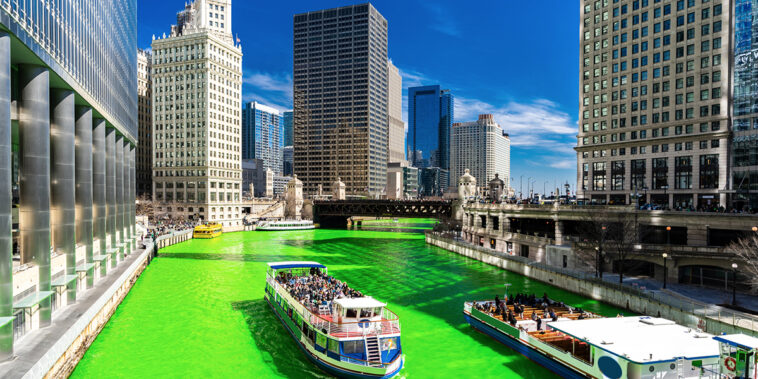In the United States, the shamrock and its color represent Irish culture on St. Patrick’s Day. Many other countries, including several unlikely places, join in on the festivities, too. So what do the celebrations look like around the world?
Buenos Aires: South America’s largest St. Patrick’s Day celebration takes place in this city, which actually has the fifth largest Irish community in the world. A giant street party with music and dancing is held each year as well.
Boston: Rich with Irish heritage, Boston’s parade is held in the largely Irish-American neighborhood of South Boston. The festivities attract nearly one million people each year and are broadcast on live television.
Cape Town: This South African city honors the Irish culture by lighting the famous Table Mountain green, creating a stunning backdrop for the whole city.
Chicago: Almost half a million people flock to see the famous dyeing of the Chicago River each year, followed by pub crawls, parties and parades.
Munich: Mass commences this city’s merriments. After that, tens of thousands of spectators line up for the annual parade, Guinness in hand.
New York City: Shown on national television, this city’s St. Patrick’s Day Parade is the largest in the world. The route follows iconic Fifth Avenue and lasts for six hours.
Savannah: For almost 200 years, this charming Georgia city has been hosting its own St. Patrick’s Day Parade, which is now the third largest in the world. Residents and tourists celebrate Irish culture throughout the entire month of March.
Tokyo: This modern city has been putting on St. Patrick’s Day parades for over 20 years. Bright costumes, proud marching bands and festive floats can be expected.
Irish Symbols and How They Came to Be
Corned beef: Back home in Ireland, bacon was traditionally added to cabbage dishes, but Irish immigrants learned they could substitute corned beef (beef brisket that is cured in a brine and then boiled) to save money.
Green: Saint Patrick was commonly associated with the color blue and leprechauns initially were believed to wear red clothing, so how did green become the color representing Ireland? Since the country is known as the Emerald Isle and green is part of the Irish flag, the color quickly picked up speed to represent the Irish culture.
Leprechaun: This term is derived from a Celtic word meaning “small-bodied fellow” and stems from the Celtic belief in fairies. Folklore says these mischievous beings granted wishes in exchange for being released if they were captured, but now they are known as the keepers of the pot of gold at the end of the rainbow.
Shamrock: It is believed that the shamrock became a national emblem of Ireland because Saint Patrick used a three-leaf clover to illustrate the Holy Trinity to the Irish people.




Comments